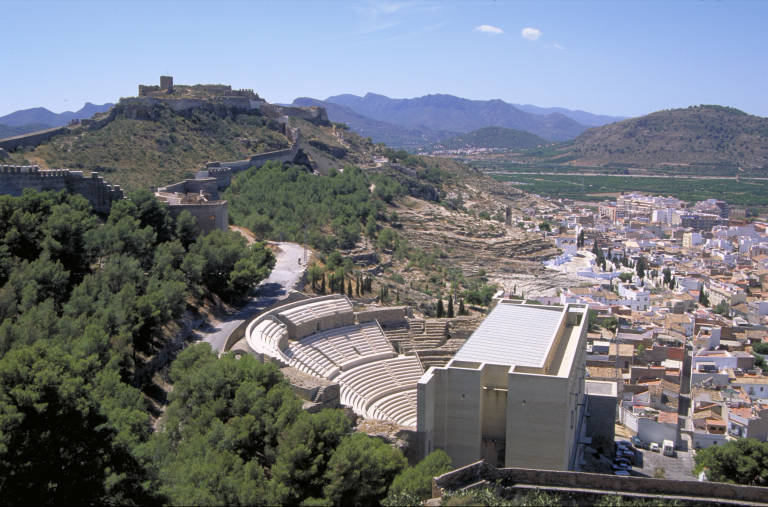Sagunto: un pasado inaudito

VALÈNCIA. A medio camino entre el mar Mediterráneo y la sierra Calderona, un castillo del siglo V a. C. se aferra a la ladera de un cerro y extiende su kilométrica muralla. Es la imagen de Sagunto, junto al Teatro Romano. Una visita que prosigue por el legado hebreo, que se preserva en el entorno de la Judería —una de las mejor conservadas de España—. Además, conocerás la herencia siderúrgica de la ciudad, que se hace presente en el Alto Horno número dos, que reposa en el puerto. Precisamente en su fachada marítima disfrutarás de excelentes playas (Almardá, Corinto, Malvarrosa y Puerto de Sagunto). Alegre y cultural, Sagunto se llena de sabores con la celebración del Concurso Gastronómico de la Naranja (febrero) y vibra con las Fallas y la Semana Santa (ambas declaradas de Interés Turístico Nacional).
Halfway between the Mediterranean Sea and the Calderona Mountain Range, a 5th century BC castle clings to the side of a hill and extends its kilometric wall. It’s the image of Sagunto along with the Roman Theatre, the city’s other treasure. A visit that continues through a Jewish legacy that still remains in the Jewish Quarter, one of the best conserved in Spain. You will even discover the city's steel heritage, which is obvious in the Alto Horno (blast furnace) number two, located in the port. You will enjoy excellent beaches (Almardá, Corinto, Malvarrosa and Puerto de Sagunto) in its seafront area. Cheerful and cultural, Sagunto becomes a delight to the palate with the Gas-tronomic Orange Contest (February) and it pulses with life with Fallas and Holy Week (both de-clared Festivals of National Tourist Interest).

